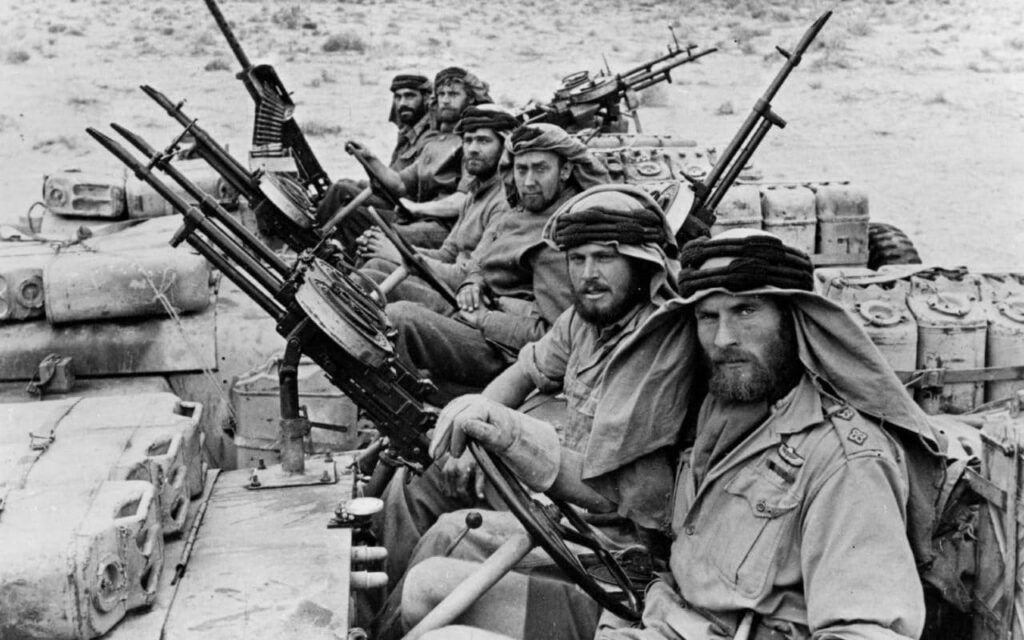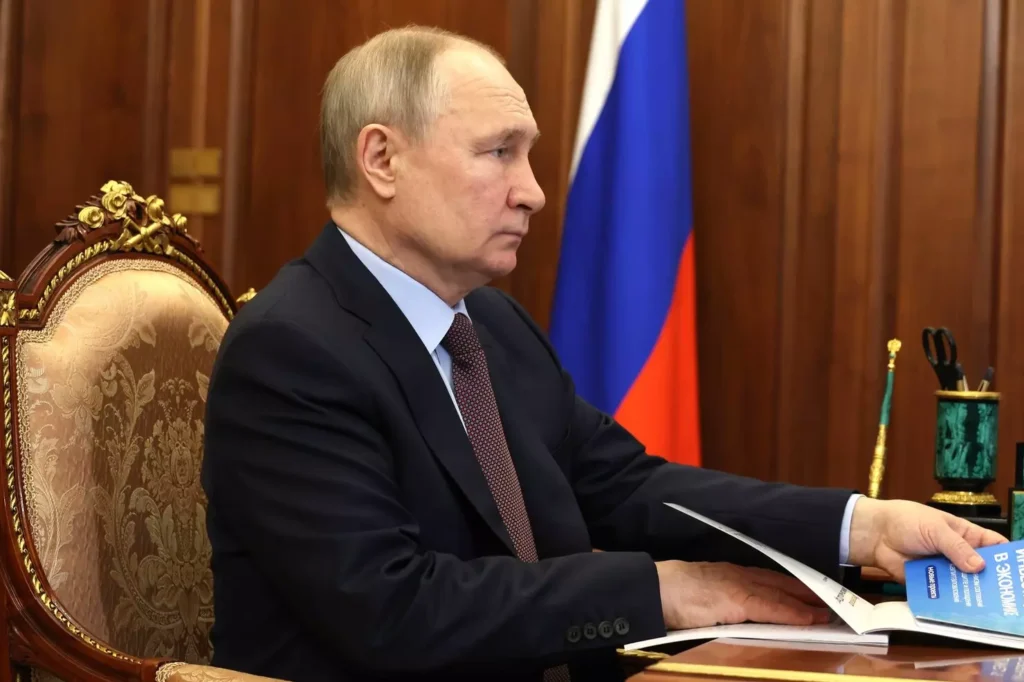This is the rundown of Wagner Group’s mutiny
- By Stavros Atlamazoglou
Share This Article

For the past 17 months, the United States is in war with Mexico. Although intelligence suggested that the U.S. military would have a walk in the park and the invasion would be over in three days, the Mexican military put up a fierce resistance, stopping U.S. forces and inflicting humiliating defeats.
With casualties mounting and time running out, the U.S. private military company Arkan, which has been fighting alongside the U.S. military, decides to change things. In a surprise operation, Arkan mercenaries storm and capture the headquarters of the U.S. Southern Command in Doral, Florida. Seeing that the U.S. military can’t oppose them, Arkan troops assemble a mechanized convoy and head to Washington, D.C. Some U.S. military units join in the mutiny while Arkan mercenaries shoot down several U.S. military aircraft on the way. The president leaves the capital to avoid arrest.
The above fictional scenario gives you a taste of what happened in Russia over the weekend.
For about 36 hours, the future of Russian President Vladimir Putin looked precarious when Yevgeny Prigozhin, once a loyal enabler and the leader of Wagner Group, rebelled.
Starting on Friday afternoon and going on until Saturday night, the Wagner Group private military company mounted one of the most impressive mutinies in modern times, capturing a major military headquarters and marching to Moscow.
After the mediation of Belarussian President Alexander Lukashenko, Prigozhin agreed to stop his march to Moscow and relocate his forces to Belarus.
The mutiny is likely the wildest event in the Russian invasion of Ukraine so far. And this is how it started.
Related: How will the war in Ukraine end and what about Crimea?
The contracts that led to mutiny

The feud between the Russian Ministry of Defense and the Wagner Group is no secret. Prigozhin made sure of that with frequent tirades against the leadership of the Russian military, even making it a point to personally attack Russian Defense Minister Sergei Shoigu and Chief of the General Staff Valery Gerasimov.
The conflict between the two sides stemmed from the general failure of Moscow’s “special military operation” in Ukraine as well as complaints by the Wagner Group of insufficient logistical support to its operations from the Russian Ministry of Defense.
Despite the large numbers of mercenaries and heavy weapon systems the private military company can field, it still depends on the Russian military for ammunition and fuel.
As time went on, the feud became increasingly bitter, finally leading to the Kremlin’s announcement on June 10 that all members of “volunteer formations” sign contracts with the Russian military by July 1. Although the decision didn’t identify the Wagner Group by name, it was clear to everyone who was the intended recipient. Prigozhin immediately went public and said that none of his fighters would sign any contracts with the Ministry of Defense.
On June 19, just four days before the mutiny and weeks into the Ukrainian counteroffensive, Prigozhin was pressuring the Ministry of Defense for a revised contract of his own drafting that would allow Wagner Group mercenaries to be independent.
On Friday, the Ministry of Defense sent its reply in the form of missiles on Wagner Group training camps.
Reports indicate that the U.S. intelligence community was aware of Prigozhin’s plans and intentions. Starting a few weeks ago, U.S. intelligence agencies picked up signs that Prigozhin was massing men, weapons, and ammunition and placing them in strategic areas in Ukraine and Russia. But it appears that Putin was also aware of Prigozhin’s machinations.
The mutiny showed that Prigozhin and his mercenaries are important players in the mess that is Russian politics.
Related: With an eye to Russia, US sends 100 aircraft for NATO’s biggest air exercise ever
An important player
Appears that the heavy smoke was a downed Russian helicopter near Pavlovsk, Voronezh Oblast. https://t.co/02fhX1JR68 pic.twitter.com/SbgaFvvO8M
— OSINTtechnical (@Osinttechnical) June 24, 2023
The Wagner Group has been playing a major role in Putin’s “special military operation” in Ukraine.
At the height of its power, the Wagner Group could field as many as 50,000 troops, with 40,000 of them being convicts on short-term contracts and the rest professional mercenaries. However, the fighting in the Donbas, and especially in and around Bakhmut, took a heavy toll on the private military company. Western intelligence assessments estimate that the Russian forces, including the Wagner Group, lost up to 100,000 men in the fight to take the town.
Prigozhin claimed that he had 25,000 men behind him in his mutiny. That figure is likely inflated, and Wagner Group fielded no more than 12,000 mercenaries in the mutiny. That is still a significant number of troops and it almost brought Prigozhin inside Moscow.
Prigozhin’s future is uncertain. He is too clever and cunning to back off from a position of strength without serious guarantees about his future and that of his private military company. But Putin can’t afford to have the man who challenged his authority loose. In the uncertain times ahead one thing is for sure: Prigozhin will think twice before standing too close to a window.
Feature Image: Yevgeny Prigozhin’s military mutiny in Rostov-on-Don on June 24, 2023. A tank with flowers in the muzzle. (Photo by Fargoh/Wikimedia Commons)
Read more from Sandboxx News
- In the Army Now – How good is the comedy about real-life reserves?
- The veteran and the beard – Like peanut butter and jelly
- The best fighters America *almost* put on aircraft carriers
- Military explores new uses for AI as capabilities explode
- Navy offers record-high bonus for recruits who pursue nuclear jobs
Related Posts
Sandboxx News Merch
-

A-10 ‘Thunderbolt Power’ Framed Poster
$45.00 – $111.00 Select options This product has multiple variants. The options may be chosen on the product page -

‘Sandboxx News’ Camo Trucker Hat
$29.00 Select options This product has multiple variants. The options may be chosen on the product page
Stavros Atlamazoglou
Greek Army veteran (National service with 575th Marines Battalion and Army HQ). Johns Hopkins University. You will usually find him on the top of a mountain admiring the view and wondering how he got there.
Related to: Breaking News, Ukraine

The Long Range Desert Group and the birth of special operations around the world

SDV: The secret weapon of the Navy SEAL Teams

C-5 Super Galaxy: Anywhere in the world in 24 hours

Ukraine peace negotiations don’t look promising
Sandboxx News
-

‘Sandboxx News’ Trucker Cap
$27.00 Select options This product has multiple variants. The options may be chosen on the product page -

‘AirPower’ Classic Hoodie
$46.00 – $48.00 Select options This product has multiple variants. The options may be chosen on the product page -

‘AirPower’ Golf Rope Hat
$31.00 Select options This product has multiple variants. The options may be chosen on the product page -

‘Sandboxx News’ Dad Hat
$27.00 Select options This product has multiple variants. The options may be chosen on the product page
